What the Internet Was Like in 2005
2005 was the year Web 2.0 business began to boom, with the acquisitions of Flickr and MySpace, the launch of YouTube and Reddit, and new innovations in RSS and web development.
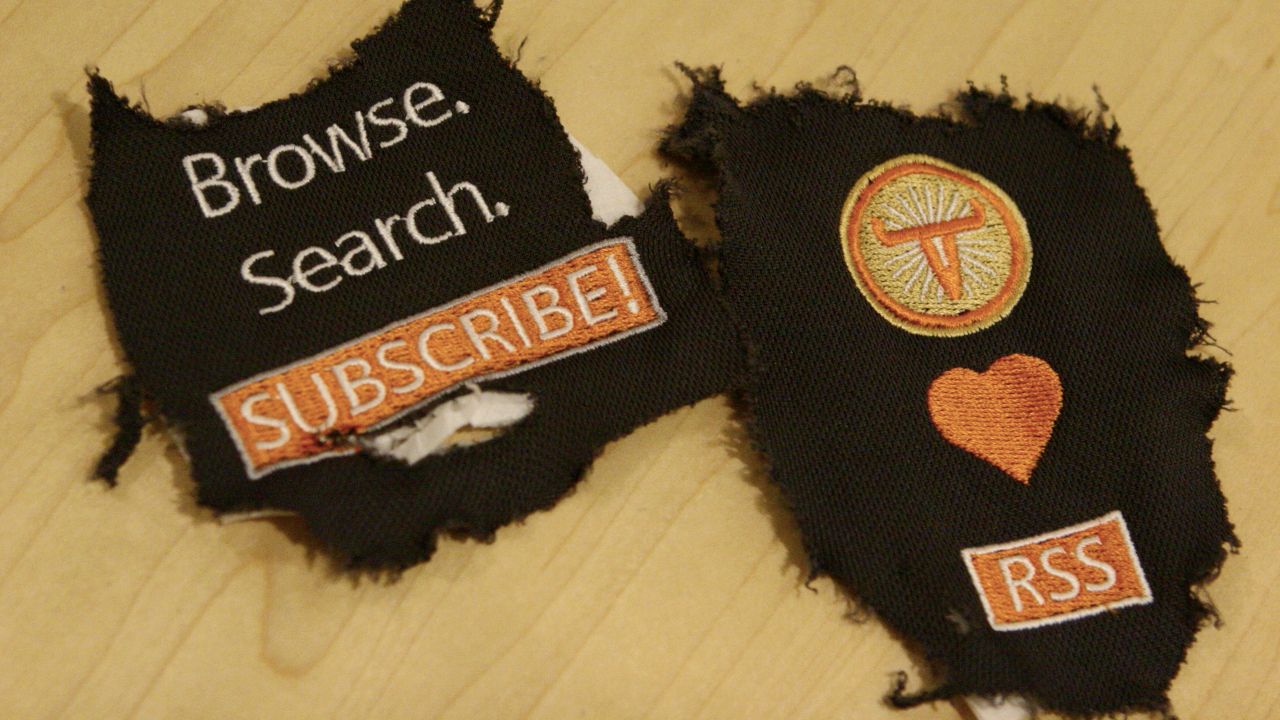
By 2005, Web 2.0 — the Web as platform — was the driving trend of Silicon Valley. It was a new tech bubble, and that meant startup launches galore. YouTube and Reddit were just a couple of the future all-star web products launched in 2005. There were also plenty of acquisitions that year, including the leading social network of the day, MySpace, being purchased by NewsCorp.
There were technological advances too — in RSS aggregation, next-generation search services, "mashups" with APIs, and (perhaps the most glitzy innovation of all) a new JavaScript technique named Ajax.
Silicon Valley is Back, Baby!
Nothing says a bubble like M&A activity. The action began in February, with Ask.com's purchase of Bloglines (my personal favorite RSS Reader). But that only impacted geeks like me. It was the acquisition of photo-sharing website Flickr in March, by Yahoo, which signaled that Web 2.0 was open for business for a broader internet market.
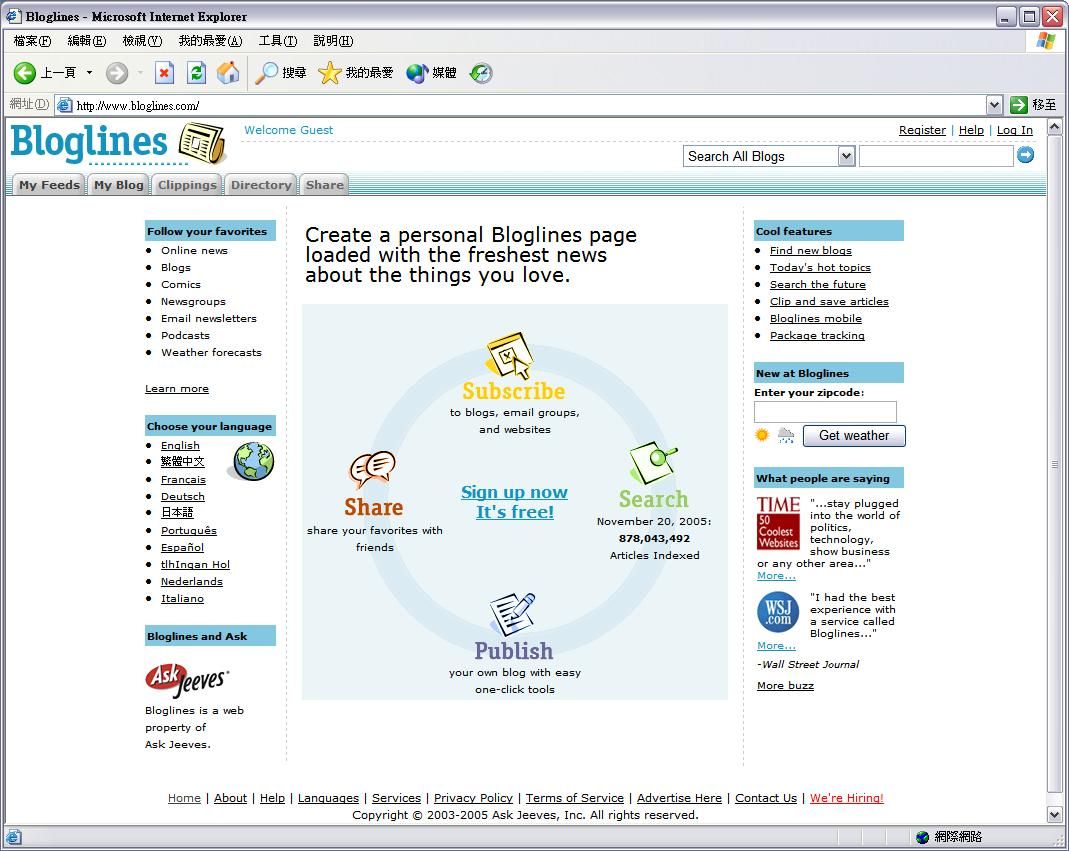
Other interesting acquisitions during this period included:
-
Google buying Android in July (although it would take many months before anyone even noticed);
-
News Corp buying then leading social network MySpace the same month (which, like many acquisitions, then and now, effectively ended its run of success); and
-
eBay purchasing Skype in September (notable mainly for going over the billion dollar mark, perhaps for the first time in Web 2.0).
There were also several significant startup or product launches during the first part of 2005: Google Maps in February (important for the rise of “mashups”, due to its API), Reddit in June, and the beta of YouTube in May.
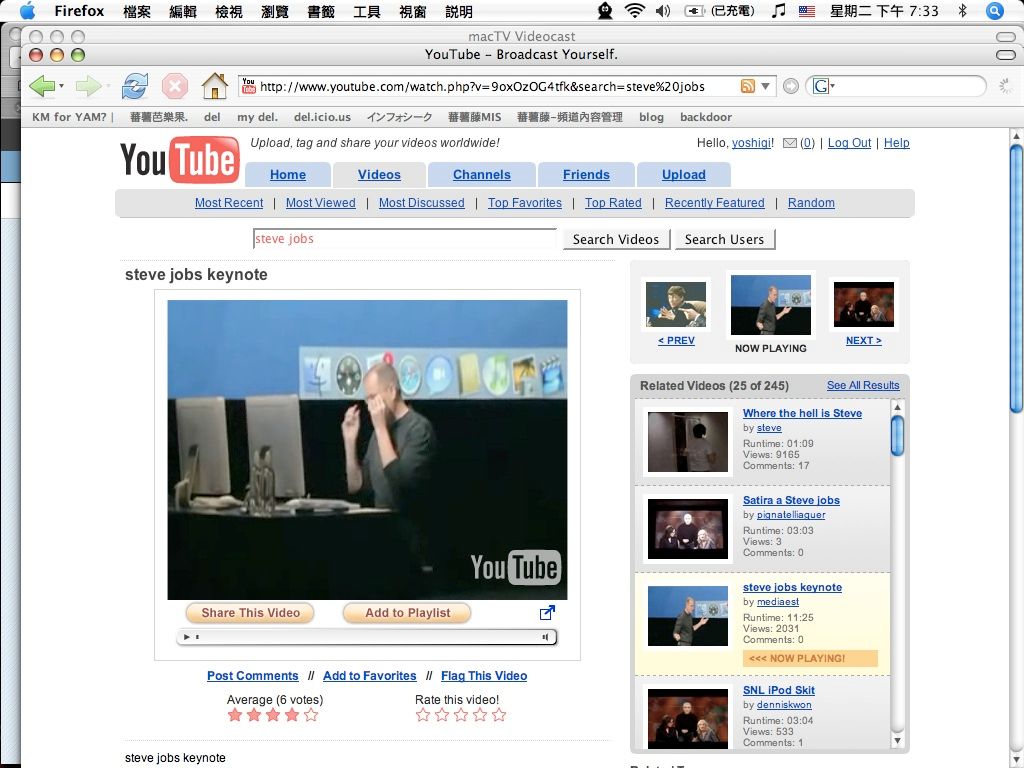
A Web Development Milestone
A very influential technical essay was published in February, which was inspired by the launch of Google Maps. It was by Jesse James Garrett from the web design firm Adaptive Path. The essay, “Ajax: A New Approach to Web Applications”, ushered in a new buzzword (Ajax) and popularised a form of JavaScript development where updates happened on a web page without the page needing to be reloaded. It wasn’t an entirely new technique, but it became more prevalent after Ajax was coined.

After noting that Google was using the Ajax approach in all of its recent web products — including Gmail and Maps — Garrett wrote that “many of the features that people love in Flickr depend on Ajax, and Amazon’s A9.com search engine applies similar techniques.”
Along with RSS, APIs and Ruby on Rails, Ajax was among the most talked about technologies in the early part of Web 2.0.
Web 2.0 Business in 2005
There was cautious optimism throughout 2005 that people could actually make money from Web 2.0 — that it would be different from how the dot-com era ended. In a 2005 post I wrote on ZDNet, I discussed one of the trending product categories at this time: mashups.
“Mashups is a current hot topic and many people are getting excited about the possibility of earning money by mashing up several services into one. I recently did a review of the top mashups on the Web today and was impressed by the quality and number of mashups and API services, from Virtual Places to mashingtonpost.com.”
In another ZDNet post, I talked about some “new Web 2.0 services of note.” In hindsight, my best call was mentioning Atlassian, then a relatively unknown enterprise startup:
“Atlassian is an Australian company that provides enterprise software solutions. The reason I'm mentioning them is a tip I got from a reader, who said "rumour has it they are doing more business than JotSpot and Socialtext combined but with no VC and not much coverage as I can tell!" That's impressive, but note that it's unverified.”
Real web businesses were forming in 2005 and some — like Atlassian — would turn into major IT public companies in the years to come. This wouldn't be another dot-com.
The Rise of Tech Blogs
Over the course of 2005, I found my groove with my tech blog Read/WriteWeb — especially after my revelatory first trip to Silicon Valley in September/October 2005. I'd started RWW in 2003, but 2005 was the tipping point in its popularity.
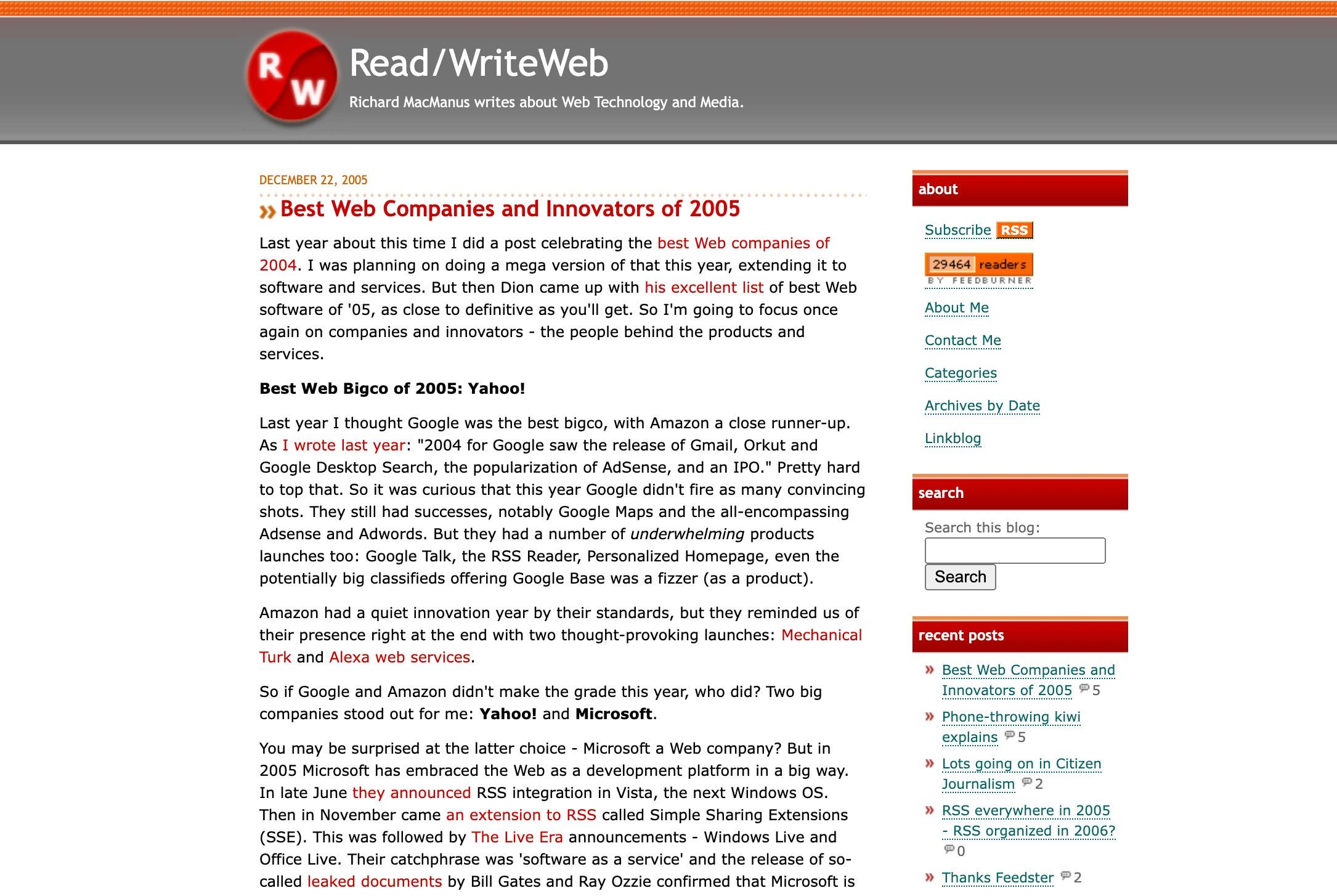
A few other notable tech blogs launched during this time: TechCrunch in June, Mashable around July (Pete Cashmore first left a comment on RWW in September ‘05), and ProgrammableWeb by John Musser in August.
Even though Web 2.0 as a trend took off after the Web 2.0 Conference I attended in October, it wasn’t yet apparent in the Technorati Top 100 list at the end of the year. There was only one tech blog that focused on Web 2.0 in the list at that point — Mike Arrington’s TechCrunch at number 70. But fast-forward just a year and TechCrunch was up to number 4 and Read/WriteWeb was at number 68 (I finally cracked the top 10 in 2008!).
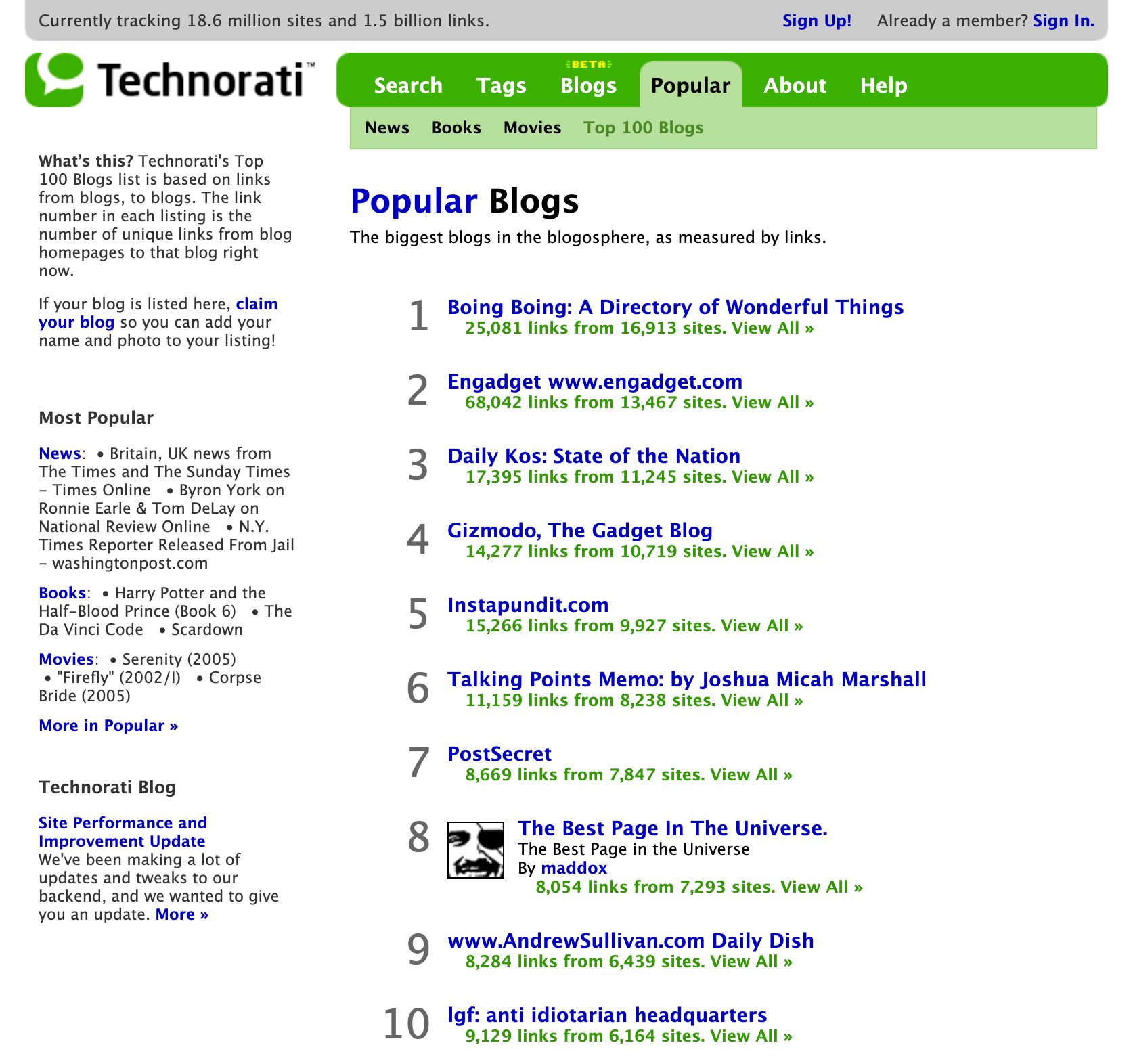
RSS and Pre-Social Media
Like many tech bloggers of this era, I was obsessed with RSS. In retrospect, in 2005 we all over-estimated how much of an impact RSS would have on the wider culture. It was algorithmic feeds on social media services that won out in the end. But in my 2005 wrapup, I was hopeful that RSS would lead to further content innovation:
“When I think about what will be the big products and services in 2006, I look (as I did last year) to RSS services and also next-generation search services. There's a real need for search services that can not only aggregate the vast amount of content on the Web - but effectively filter and organize that content based on individual preferences. There are some promising companies tackling this big problem: Rojo, Findory, Newsgator, PubSub, Topix.net, digg.com.”
I have always been an advocate of the individual user controlling his/her web experience, and I (rightly) wanted RSS to be a conduit for that. But it never happened — perhaps apart from podcasting, where RSS still reigns.
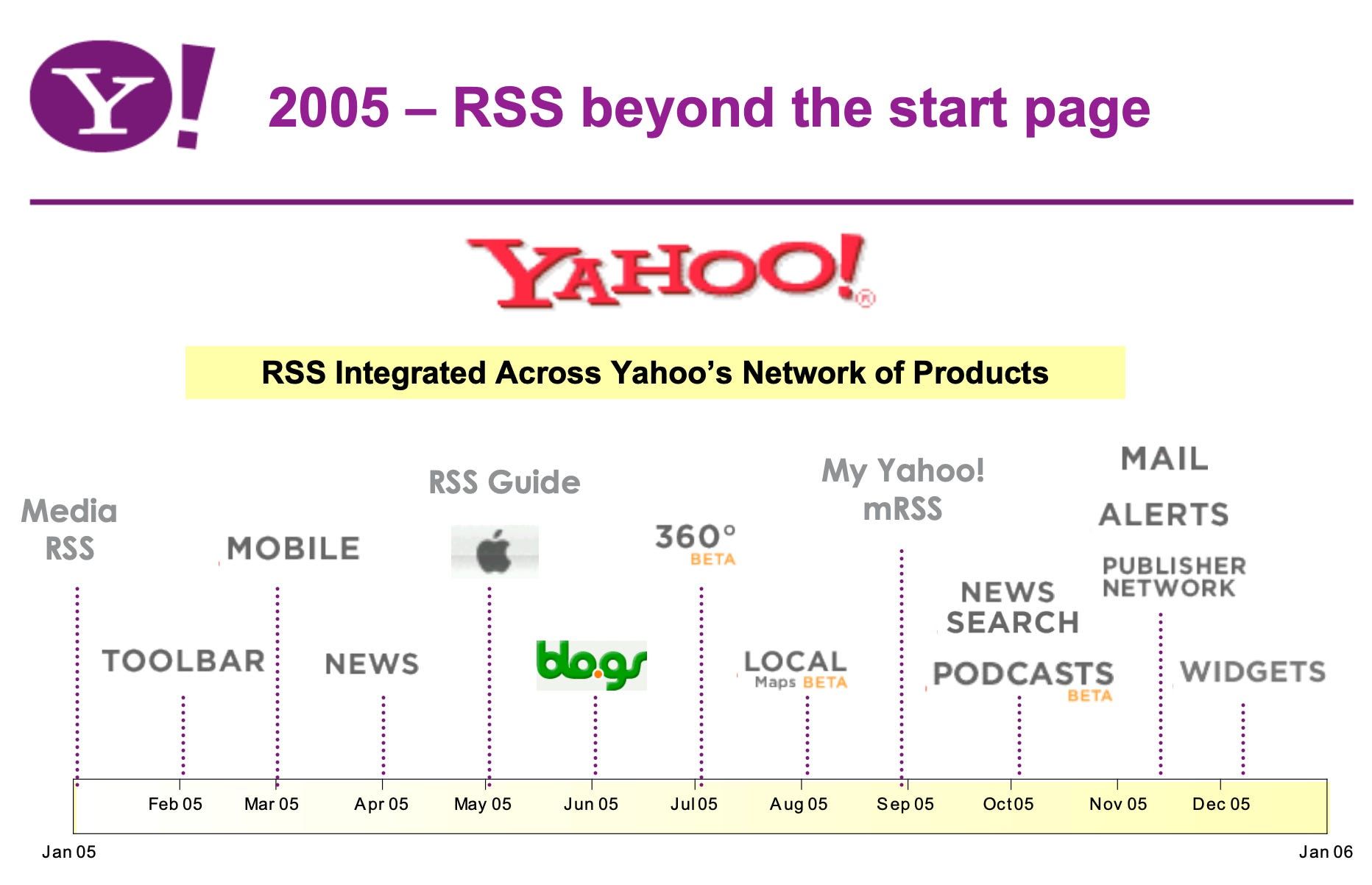
Even if web geeks got a bit too excited about RSS, in hindsight 2005 was a glory age in the internet. It was a time before social media (Facebook was still for students only), before smartphones, and before “the cloud.” You weren’t always online, which in retrospect was a good thing. Perhaps the only bad thing about that era from a tech perspective was that Internet Explorer still dominated the web browser market; but even that was a product category with promise, since all the cool bloggers were on the relatively new, open source Firefox (version 1!).
It was a time of web creativity, before the one-size-fits-all of social media came along. The beauty of blogs was that they were individualized — if you used Movable Type or WordPress, you typically did your own web design to differentiate your site from others. You had sidebars, which had “blogrolls” (a list of your blogger pals), your Flickr photos, linkblogs, and more.
Ah, the web in 2005… I do miss it, although I’m pleased to see the fediverse is showing great promise now. Open networks are always better and more fun.
Lead image: "Browse. Search. Subscribe." That’s what it was all about in 2005. Photo by Kris Krug, at Gnomedex 5, June 2005.
Read next: More year-by-year overviews of internet history
Buy the Book
My Web 2.0 memoir, Bubble Blog: From Outsider to Insider in Silicon Valley's Web 2.0 Revolution, is now available to purchase:
- Paperback, US$19.99: Amazon; Bookshop.org
- eBook, US$9.99: Amazon Kindle Store; Apple Books; Google Play
Or search for "Bubble Blog MacManus" on your local online bookstore.